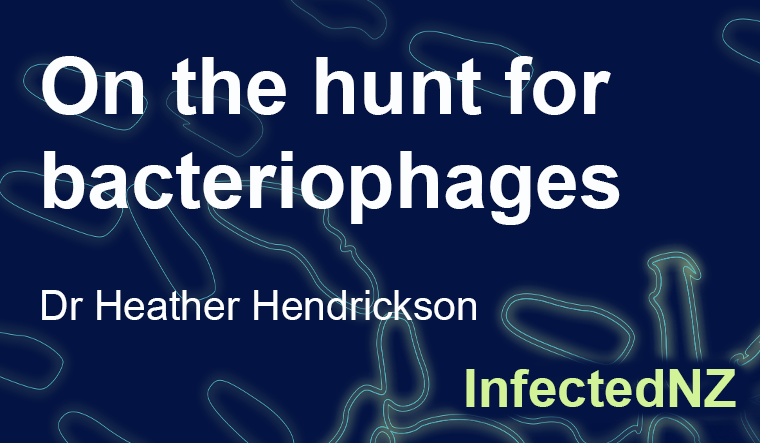The crisis of antibiotic resistant superbugs has been creeping up on us for the past 88 years. Alexander Flemming, discoverer of penicillin, the first antibiotic, in that year, said it well when he received is Nobel prize:
“It is not difficult to make microbes resistant to penicillin in the laboratory by exposing them to concentrations not sufficient to kill them, and the same thing has occasionally happened in the body. The time may come when penicillin can be bought by anyone in the shops. Then there is the danger that the ignorant man may easily underdose himself and by exposing his microbes to non-lethal quantities of the drug make them resistant.”
The superbugs that threaten to drag us back into the pre-antibiotic era today were completely predictable from the very start.
One way to think about the antibiotics is to think of them as weapons in a war that is being waged between microbes all around us. Microbes have fought for time immemorial using antibiotics and they have evolved an equally impressive cache of countermeasures: genes that confer resistance to antibiotics.
When humans stumbled into this on-going battle, we had little appreciation for the collection of resistance mechanisms that already exist in nature. To make things worse, we severely underestimate the rates that these could be borrowed or repurposed across species boundaries very easily. This is a process we now know as horizontal gene transfer.
Given our current position, looking back at the on-going microbial melee for new potential allies in this struggle is warranted. In some parts of the world, including Russia and Georgia, the natural parasites of bacteria, Bacteriophages, have been put to use in medicine since before World War I.

Bacteriophages. At left, a diagram of a typical bacteriophage. At right, A bacteriophage underneath the electron microscope.
Bacteriophages (phages for short) were discovered roughly 100 years ago, before antibiotics and they have been used medicinally in the form of small liquid vials, full of mixed cocktails of bacteriophages. Bacteriophage therapy practitioners have designed these phage cocktails and used them to great effect while the rest of Western medicine pursued Flemming’s new antibiotics.
Bacteriophages are not currently accepted in Western medicine but they are approved for use in food preparation by the USDA. Bacteriophage therapy has many obstacles to overcome before it might be accepted. One of these is the double edged sword of specificity. Bacteriophages are highly specific to a particular bacterial strain. This means that they will not hurt the beneficial microbes that contribute to our health. However it also means that finding the right one for a particular infection requires a stockpile of phage types. We need to learn more about the bacteriophages around us before we will be ready for this sort of personalized approach to fighting infection. There are estimated to be 1031 bacteriophages on the planet so as long as we can find them and study them, we have access to the stockpiles we need.
In order to learn more about these important entities, the undergraduates that take our Bacteriophage Discover and Genomics paper at Massey University are contributing to the global pool of phage information. We have joined the Howard Hughes Medical Institute’s Science Education Alliance programme to hunt for phages that are able to infect a close cousin of Mycobacterium tuberculosis. Last year we found four phages and sequenced two. As far as we know these are the very first Mycobacteriophages to be found in New Zealand (below figure).

Phage Hunt Map. Each symbol represents a single sequenced Mycobacteriophage. Last year, the phage hunters at Massey University put NZ on the map!
To hear more about Bacteriophages, watch Heather’s TedX talk.
It’s an exciting time to be a phage hunter! To learn more about our phage hunt, check out the student blog, Phage Hunt NZ.
About
 Dr Heather Hendrickson is a Senior Lecturer at Massey University. She has been dabbling in Phage Hunting since her time at the Pittsburgh Bacteriophage Institute as a PhD student. Heather’s laboratory at Massey University, Auckland studies the evolution of bacteria and bacteriophage discovery in Pseudomonas, Mycobacteria and Lactococcus.
Dr Heather Hendrickson is a Senior Lecturer at Massey University. She has been dabbling in Phage Hunting since her time at the Pittsburgh Bacteriophage Institute as a PhD student. Heather’s laboratory at Massey University, Auckland studies the evolution of bacteria and bacteriophage discovery in Pseudomonas, Mycobacteria and Lactococcus.
What is InfectedNZ?
Hey, Aotearoa. It’s time we had a chat about infectious diseases and what we’re going to do about the looming antimicrobial armageddon. That’s why we’ve asked leading health, social and economic researchers, and people with personal stories, to help us get real about our vulnerability and discuss solutions. Follow their blogs right here at tepunhahamatatini.ac.nz and watch the conversation spread across social media with #infectedNZ.
Backing it all up, wherever possible, is data from the good folk at Figure.NZ. Their super duper charts are based on data sourced from public repositories, government departments, academics and corporations. Check out their #infectedNZ data board and sign-up to create your very own data board on any topic that floats your boat.

